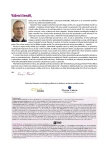Analysis of the set of primiparous women with induced labor
Authors:
Lenka Krajčiová; Michael Halaška; Iva Mikysková; Eva Homolková; Borek Sehnal
Authors‘ workplace:
Gynekologicko-porodnická klinika 1. LF UK a Nemocnice Na Bulovce, Praha
Published in:
Prakt Gyn 2015; 19(2): 89-95
Category:
Gynecology and Obstetrics: Original Article
Overview
Objective:
To analyse effect of induced labor in primiparous women after completed 41st gestation week without any other pathology.
Design:
Retrospective clinical study.
Setting:
Department of Gynaecology and Obstetrics, First Faculty of Medicine, Charles Univesity in Prague, Hospital Na Bulovce.
Material:
Altogether 6 317 women delivered at Hospital Na Bulovce in Prague between years 2011–2013. In 203 primiparous women after completed 41st gestation week, labor was induced by prostaglandin dinoproston. The control group consisted of 291 primiparae with spontaneus onset of labor after the term.
Methods:
We compared the groups in respect to patient´s age, parity, total duration of labor, total blood loss, frequency of different ways of delivery, frequency of analgesia, frequency of diverse delivery injuries, manual removal of placenta and uterine hypotonia, neonatal outcomes (Apgar score of newborns, and the pH of umbilical arterial and vein blood). Data were retrospectively obtained from the medical documentation and statistically processed.
Results:
We proved significantly higher frequency of Caesarean sections (21,2 % vs 11,0 %, p < 0,002), statistically significant higher blood loss (341 ml vs 314 ml, p = 0,002), and frequency of epidural analgesia applications (25,1 % vs 11,7 %, p < 0,001) in the study group. Other analysed parameters were similar in both groups. Expected effect of age more than 35 years on frequency of Caesarean section was not proved in the study group.
Conclusion:
We found a substantially higher frequency of Cesarean sections in primiparous women with induced labor. The duration of delivery and the frequency of uterine hypotonia were similar as in the control group. The pharmacological labor induction is a strong risk factor for Caesarean delivery in primiparous women with induced labor for postterm pregnancy.
Key words:
Caesarean section – dinoproston – forceps – induced labor – postterm pregnancy – primipara – prostaglandins – vacuum extraction
Sources
1. Čech E, Hájek Z, Maršál K et al. Porodnictví. 2. ed. Grada Publishing: Praha 2007. ISBN 80–247–1313–9.
2. Basu A, Elgey S, Haran M. Outcome of Induction of Labour in Nulliparous Women Following Replacement of Cervidil with Prostin. ScientificWorldJournal 2012; 2012: 325968. Dostupné z DOI: <http://dx.doi.org/10.1100/2012/325968>.
3. Binder T. Přistupujeme správně k potermínové graviditě? Actual Gyn 2009; 1: 30–33.
4. Roztočil A. Preindukce a indukce porodu – doporučený postup. Čes Gynek 2013; 78(Suppl): 19–20.
5. Roztočil A, Měchurová A. Potermínová gravidita – doporučený postup. Čes Gynek 2013; 78(Suppl): 18–19.
6. Měchurová A. Současné názory na management odtoku plodové vody. Čes Gynek 2013; 78(Suppl): 15–18.
7. Roztočil A. Předčasné ukončení těhotenství; indukce porodu. In: Hájek Z (ed). Rizikové a patologické těhotenství. Grada Publishing: Praha 2004. ISBN 80–247–0418–8.
8. Stefanovic V, Paavonen J, Loukovaara M et al. Intravenous sulprostone infusion in the treatment of retained placenta. Acta Obstet Gynecol Scand 2013; 92(4): 426–432.
9. Krause E, Malorgio S, Kuhn A et al. Off-label use of misoprostol for labor induction: a nation-wide survey in Switzerland. Eur J Obstet Gynecol Reprod Biol 2011; 159(2): 324–328.
10. Kadanali S, Küçüközkan T, Zor N et al. Comparison of labor induction with misoprostol vs. oxytocin/prostaglandin E2 in term pregnancy. Int J Gynaecol Obstet 1996; 55(2): 99–104.
11. Tang J, Kapp N, Dragoman M et al. WHO recommendations for misoprostol use for obstetric and gynecologic indications. Int J Gynaecol Obstet 2013; 121(2): 186–189.
12. Mozurkewich EL, Chilimigras JL, Berman DR et al. Methods of induction of labour: a systematic review. BMC Pregnancy Childbirth 2011; 11:84. Dostupné z DOI: <http://doi: 10.1186/1471–2393–11–84>.
13. Gerli S, Favilli A, Giordano C et al. Single indications of induction of labor with prostaglandins and risk of cesarean delivery: a retrospective cohort study. J Obstet Gynaecol Res 2013; 39(5): 926–931.
14. Basirat Z, Barat SH, Ghanbarpour A et al. Does vaginal pH affect the efficacy of dinoprostone in cervical ripening/labor duration? Clin Exp Obstet Gynecol 2012; 39(4): 522–525.
15. Memon F, Wijesiriwardana A, Jonker L. Maternal and prenatal factors influencing the outcome of prostaglandin E2 induced labour. J Obstet Gynaecol 2011; 31(3): 220–223.
16. Melamed N, Ben-Haroush A, Kremer S et al. Failure of cervical ripening with prostaglandin-E2 can it be predicted? J Matern Fetal Neonatal Med 2010; 23(6): 536–540.
17. Pařízek A. Epidurální analgezie. In: Pařízek A (ed). Analgezie a anestezie v porodnictví. 2. ed. Galén: Praha 2012. ISBN 978–80–7262–893–3.
18. Capogna G, Parpaglioni R, Lyons G et al. Minimum analgesic dose of epidural sufentanil for first-stage labor analgesia: a comparison between spontaneous and prostaglandin-induced labors in nulliparous women. Anesthesiology 2001; 94(5): 740–744.
19. Islam A, Ehsab A, Arif S et al. Evaluating trial of scar in patients with a history of caesarean section. North Am J Med Sci 2011; 3(4): 201–205.
20. Cogan A, Barlow P, Benali N et al. An audit about labour induction, using prostaglandin, in women with a scarred uterus. Arch Gynecol Obstet 2012; 286(6): 1399–1406.
21. Jozwiak M, Dodd JM. Methods of term labour induction for women with a previous caesarean section. Cochrane Database Syst Rev 2013; 3:CD009792. Dostupné z DOI: <http://doi: 10.1002/14651858.CD009792.pub2>.
22. Schmitz T, Pourcelot AG, Moutafoff C et al. Cervical ripening with low-dose prostaglandins in planned vaginal birth after cesarean. PLoS One 2013; 8(11): e80903. Dostupné z DOI: <http://doi: 10.1371/journal.pone.0080903>.
Labels
Paediatric gynaecology Gynaecology and obstetrics Reproduction medicineArticle was published in
Practical Gynecology

2015 Issue 2
Most read in this issue
- Possible treatment of anogenital warts with the immunomodulation agent Isoprinosine
- Spontaneous birth after Caesarean section – importance of sonographic evaluation of the lower uterine segment
- Methods of screening for the most common congenital structural and chromosomal fetal defects
- Behaviour and psychosocial needs of newborn
